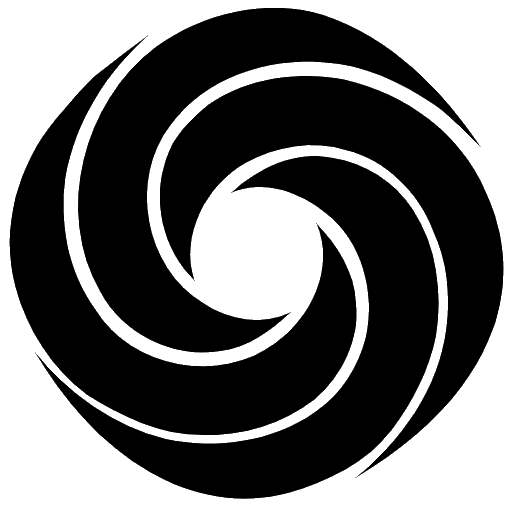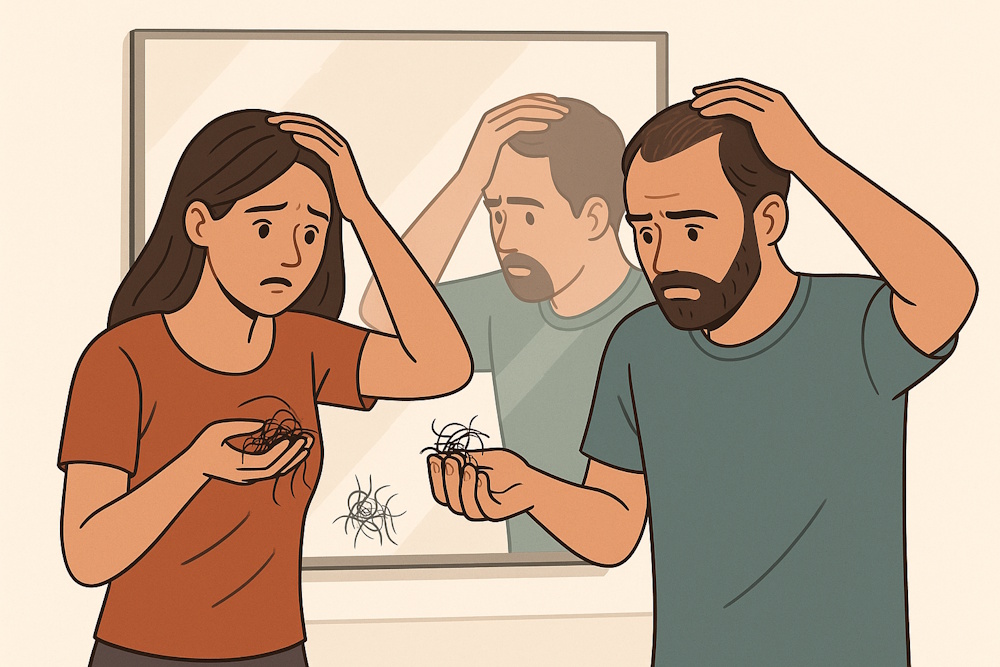Hair loss affects millions of men and women worldwide and is often a source of stress, insecurity, and frustration. According to the American Hair Loss Association, around 65% of men show noticeable signs of alopecia by the age of 35, while 40% of women experience significant thinning after menopause. Although hair shedding is common, not all cases are permanent or irreversible. With the right approach, it is possible to slow down, stop, and even encourage regrowth. Today, a combination of scientific research and natural methods offers effective and safe solutions that can be incorporated into daily routines.
Main Causes
- Genetics – Androgenic Alopecia (AGA):
By far the most common form of hair loss, androgenic alopecia is driven by the action of dihydrotestosterone (DHT), a byproduct of testosterone. This hormone gradually miniaturizes hair follicles, leading to thinner, weaker hair until growth eventually stops. Family history strongly influences whether someone is predisposed to AGA. - Stress and Anxiety:
Chronic stress or sudden traumatic events can trigger telogen effluvium, a condition where more hairs than usual enter the shedding phase. While often temporary, prolonged stress can aggravate other forms of alopecia and accelerate visible thinning. Stress management, relaxation techniques, and proper sleep are essential for prevention. - Hormonal Changes:
Shifts in hormones during pregnancy, postpartum recovery, menopause, or thyroid disorders can significantly disrupt the natural hair cycle. Women are especially affected, as changes in estrogen and progesterone levels influence the growth and shedding phases of hair. - Nutritional Deficiencies:
Hair follicles are highly sensitive to deficiencies. Low levels of iron, zinc, vitamin D, or essential amino acids can weaken follicles and slow growth. Balanced nutrition and supplementation (when needed) are key to maintaining scalp and follicle health. - Autoimmune Diseases – Alopecia Areata:
In this condition, the body’s own immune system mistakenly attacks hair follicles, causing sudden bald patches that may appear on the scalp, eyebrows, or even eyelashes. While it can be unpredictable, some cases resolve spontaneously, while others require treatment to stimulate regrowth. - Damaging Habits and External Factors:
Tight hairstyles like ponytails or braids, frequent heat styling, chemical treatments, and aggressive brushing can weaken both the hair shaft and follicle. Over time, these practices may lead to traction alopecia, a preventable but sometimes permanent form of hair loss if the stress on the follicles continues.
Scientific Evidence
Several studies support the idea that mechanical and natural stimulation of the scalp can encourage hair regrowth:
- 2012 Detumescence Therapy Study: Reported up to 90% hair recovery within 300 days through scalp massage techniques that improve tissue flexibility and reduce inflammation.
- 2016 Clinical Study (PMC4740347): Showed that daily scalp massage enhances blood circulation and stimulates hair follicles, leading to thicker, healthier growth over time.
- 2019 Springer Research: Demonstrated that mechanical stimulation activates regenerative genes in the scalp, providing molecular evidence for the effectiveness of massage-based approaches.
Folixyl: A Natural Solution
Folixyl is built on these scientific principles and simplifies them for practical daily use. Using specially designed rollers, Folixyl reduces the time needed for effective scalp massage from the typical 40 minutes down to just 6 minutes per day.
The method is structured around four scientific pillars:
- Regenerative gene expression – activating pathways that encourage follicle repair.
- Detumescence – reducing scalp stiffness to improve tissue health.
- Improved blood circulation – ensuring follicles receive oxygen and nutrients.
- Follicle strengthening – supporting long-term resilience and density.
By combining these factors, Folixyl offers a safe, natural, and evidence-backed way to combat hair thinning without invasive procedures or heavy reliance on pharmaceuticals.
Conclusion
Hair loss is not inevitable, nor is it something you simply have to accept with age. By understanding its causes—whether genetic, hormonal, or lifestyle-related—and applying safe, science-based methods like Folixyl, it is possible to slow, stop, and even reverse thinning hair naturally. The key is consistency, patience, and a proactive approach to scalp health.
Frequently Asked Questions (FAQ)
Is there a definitive cure for alopecia?
There is no universal cure for all forms of alopecia, but effective treatments exist that can slow down hair loss and improve overall density.
Does Folixyl work for women?
Yes, Folixyl is designed to be equally effective for both men and women.
How long will it take to see results?
Many users notice reduced shedding within 2–3 weeks, while visible regrowth usually becomes apparent after 2–3 months of consistent use.
Does scalp massage hurt?
No. A proper massage should feel like gentle pressure and warmth, not pain. If it is painful, the intensity is too strong.
What happens if I stop using it?
As with any treatment, discontinuation may eventually lead to resumed shedding. Regular use is recommended for sustained results.


Leave a Reply